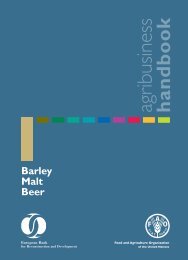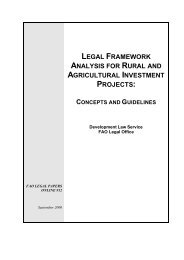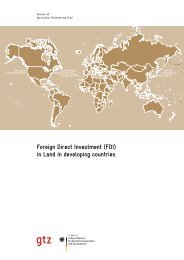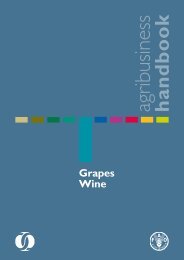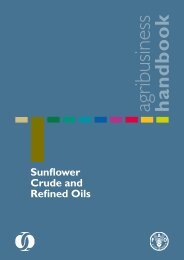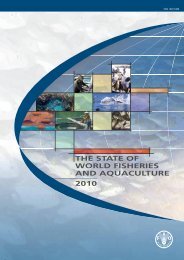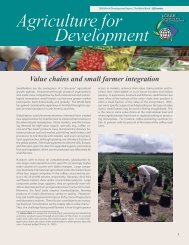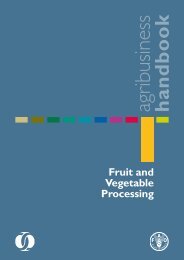Agribusiness Handbook: Milk / Dairy Products - FAO
Agribusiness Handbook: Milk / Dairy Products - FAO
Agribusiness Handbook: Milk / Dairy Products - FAO
Create successful ePaper yourself
Turn your PDF publications into a flip-book with our unique Google optimized e-Paper software.
2. MILK PROCESSING<br />
2.1 General<br />
The milk industry has moved a long way from when milk was either consumed<br />
as soon as it came from the cow or churned to produce cream and then butter,<br />
with the resulting skim milk fed to livestock. The modern dairy industry is<br />
now concerned with maximizing the value of all the solids in milk, and a vast<br />
array of technological developments have enabled sophisticated products to<br />
be made from the same essential whole milk. There are three main product<br />
groupings of processed milk products. Worldwide, approximately 30% of milk<br />
production is used as liquid milk and products, 35% is used to manufacture<br />
cheese, and the remaining 35% is used to make butter and powdeed milk. Of<br />
course, these proportions vary enormously within and among countries.<br />
2.1.1 Liquid milk and fermented milk<br />
Raw milk is heat-treated by pasteurization or higher-temperature treatments<br />
to produce drinking products, including UHT, extended-life, sterilized and<br />
pasteurized milk in a range of fat variants (typically whole, semi-skim and<br />
skim). Low-fat varieties are made by combining whole milk with skim milk from<br />
the separation process (see below) in set proportions. Cultures may be added<br />
to pasteurized milk to produce products such as yogurt, kefir and junket.<br />
Compositional standards vary from country to country, but typically whole milk<br />
has a minimum fat content of 3.5% and a non-fat milk solids minimum of<br />
8.25%. Semi-skim milk has a fat composition of between 1.5 and 1.8%, and<br />
skim milk has a maximum fat content of 0.5%.<br />
2.1.2 Cream and butter products<br />
Raw milk is separated into skim milk and cream. The pasteurized skim milk<br />
may then be added back to whole milk to produce low-fat milk, evaporated<br />
to produce condensed milk, or dried further to produce powdeed milk. The<br />
cream may be used for consumer products such as whipping cream and<br />
coffee cream, or cultures may be added to produce soured cream, crème<br />
fraîche and other products. The cream may also be churned to produce butter,<br />
which may be sold in salted or unsalted forms to consumers.<br />
Butter has a typical composition of a minimum fat content of 82%, a maximum<br />
moisture content of 16% and a maximum content of solids other than fat of<br />
2%. Butter may also be manufactured to 80% minimum fat content and may<br />
contain salt, usually up to 1.5%. Powered skim milk typically has a maximum<br />
fat content of 1.5% and a maximum moisture content of 4%.<br />
17



